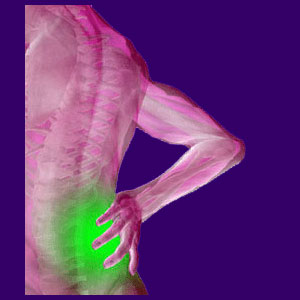
Unequal leg length is one of the many possible diagnoses common to chiropractic, but sometimes is also pronounced by physical therapists and osteopaths. The very notion of different leg lengths as a source of pain goes far back into history, yet there is little evidence that mild versions of the condition actually cause pain in the majority of affected patients. As with any possible structurally-induced back, hip or knee pain syndrome, it is crucial to judge each patient individually, since some leg length issues may be drastically different than others.
Different leg lengths can be congenital or developmental conditions. Some may be the result of traumatic injury. There are skeletal reasons for short leg syndrome to exist and soft tissue explanations. It is crucial to understand the reasons why one leg is shorter than the other before even considering any treatment options.
This essay examines diagnostic criteria and classification for short leg syndrome.
Structurally Unequal Leg Length
Structural short leg syndrome, also called anatomical short leg syndrome, is when a bone or joint abnormality actually causes one leg to be shorter than the other. This is an objective diagnosis which can be easily confirmed via diagnostic imaging study, such as x-ray. Most length discrepancies are minor and not considered the basis for any pain. Some moderate to severe length abnormalities may be symptomatic in rare cases and the worst of these conditions can truly be functionally impairing.
It must be noted that these are extreme cases and a great number of patients with minor differentiations in leg length should not blame these issues for causing lower back pain or creating sciatica. This is exactly why so many potential treatment options rarely cure associated symptoms, since the length difference may exist, but is often coincidental to the symptomatic expression suffered.
Symptomatic structural leg length issues are usually treated best with orthotic inserts or shoes. This helps to equalize the anatomy and make mobility easier and less stressful on the side of the body which must normally bear the brunt of the weight.
Functional Unequal Leg Length
An even greater back pain scapegoat condition is functional short leg syndrome. This is when the anatomy is perfectly balanced, yet a leg is measured to be short due to many possible theories, including spinal misalignment, pelvic misalignment, muscle imbalances or other soft tissue pathology. This diagnosis is virtually always made by chiropractors, often while the patient is lying down for a spinal adjustment.
Medical doctors have studied what is known as functional short leg and have basically classified it into 2 categories. There are a few patients who fit into category one, in which a functionally short leg is both chronic and painful due to some known or yet unknown anatomical deficiency, including any of those mentioned above. This is a rather rare event.
Category two consists of completely normal patients who demonstrate variable short leg which is deemed normal and completely asymptomatic. In fact, the vast majority of people examined will be found to demonstrate functional short leg to some degree. This diagnosis is one of the great problems I have with chiropractic, since select theories and treatments offered by some care providers amount to little more than smoke and mirrors.
Leg Length Differences
If you are one of the many people with chronic back pain who visit a chiropractor regularly and often hear that one leg is shorter then the other, don’t always believe the hype. At least talk to your doctor or physical therapist for a better detailed view of the issue before making up your mind. If this was the cause of your pain, then you would be cured by now.
How many spinal adjustments have you already had? Are you fully healed? No, you are stuck in chiropractic slavery (to whatever treatment you use).
The good news is that for people with structural short leg, or rare cases of actually symptomatic functional short leg, treatment is usually successful. If your treatment is not providing a lasting cure, then my advice is to always reconsider the accuracy and validity of the diagnosis.




